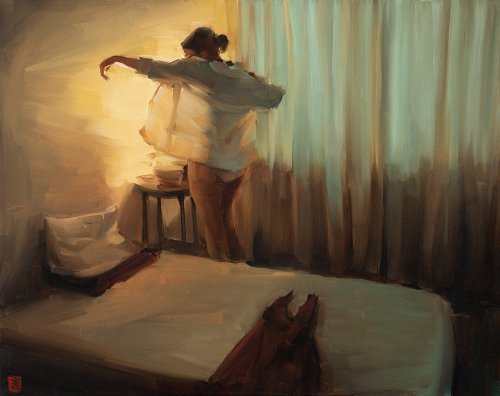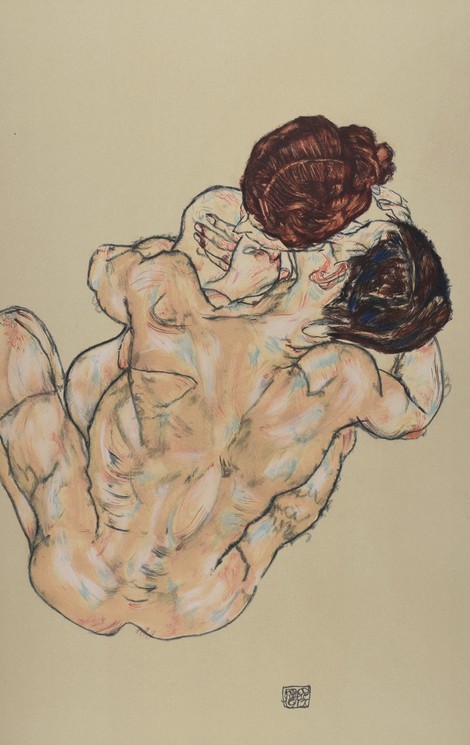September Harvest Moon
September 2024 Witch Guide
New Moon: September 2nd
First Quarter: September 11th
Full moon: September 17th
Last Quarter: September 24th
Sabbats: Mabon- September 22nd
September Harvest Moon
Also known as: Autumn Moon, Child Moon, Corn Harvest Moon, Falling Leaves Moon, Haligmonath, Leaves Turning Moon, Mating Moon, Moon of Brown Leaves, Moon When Dear Paw the Earth, Rutting Moon, Singing Moon, Wine Moon, Witumanoth & Yellow Leaf Moon
Element: Earth
Zodiac: Virgo & Libra
Nature spirts: Trooping Faeries
Deities: Brigid, Ceres, Chang-e, Demeter, Freya, Isis, Depths & Vesta
Animals: Jackal & snake
Birds: Ibis & sparrow
Trees: Bay, hawthorn, hazel & larch
Herbs: Copal, fennel, rye, skullcap, valerian, wheat & witch hazel
Flowers: Lily & narcissus
Scents: Bergamot, gardenia, mastic & storax
Stones: Bloodstone,carnelian, cat's eye, chrysolite, citrine, iolite, lapis lazuli, olivine, peridot, sapphire, spinel(blue), tourmaline(blue) & zircon
Colors: Browns, dark blue, Earth tones, green & yellow
Issues, intentions & powers: Confidence, the home, manifestation & protection
Energy: Balance of light & dark, cleaning & straightening of all kinds, dietary matters, employment, health, intellectual pursuits, prosperity, psychism, rest, spirituality, success & work environment
The full Moon that happens nearest to the fall equinox (September 22nd or 23rd) always takes on the name “Harvest Moon.” Unlike other full Moons, this full Moon rises at nearly the same time—around sunset—for several evenings in a row, giving farmers several extra evenings of moonlight & allowing them to finish their harvests before the frosts of fall arrive.
• While September’s full Moon is usually known as the Harvest Moon, if October’s full Moon happens to occur closer to the equinox than September’s, it takes on the name “Harvest Moon” instead. In this case, September’s full Moon would be referred to as the Corn Moon.
This time of year—late summer into early fall—corresponds with the time of harvesting corn in much of the northern United States. For this reason, a number of Native American peoples traditionally used some variation of the name “Corn Moon” to refer to the Moon of either August or September.
Mabon
Known as: Autumn Equinox, Cornucopia, Witch's Thanksgiving & Alban Elved
Season: Autumn
Element: Air
Symbols: Acorns, apples, autumn leaves, balance, berries, corn, cornucopia( Horn of Plenty), dried seeds, equality, gourds, grains, grapes, ivy, pine cones, pomegranates, vines, wheat, white roses & wine
Colors: Blue, brown, dark red, deep gold, gold, indigo, leaf green, maroon, orange, red, russet. Violet & yellow
Oils/Incense: Apple, apple blossom, benzoin, black pepper, hay/straw, myrrh, passion flower, patchouli, pine, red poppy & sage
Animals: Dog & Wolf
Birds: Goose, hawk, swallow & swan
Stones: Agate, amethyst, carnelian, lapis lazuli, sapphire, yellow Agate & yellow topaz
Food: Apples, blackberries, blackberry wine, breads, carrots, cider, corn, cornbread, grapes, heather wine, nuts, onions, pomegranates, potatoes, squash, vegetables, wheat & wine
Herbs/Plants: Benzoin, bramble, corn, ferns, grains, hops, ivy, milkweed, myrrh, sage sassafras, Salomon's seal, thistle, tobacco & wheat
Flowers: Aster, heather, honeysuckle, marigold, mums, passion flower, rose
Trees: Aspen, cedar, cypress, hazel, locust, maple, myrtle oak & pine
Goddesses: Danu, Epona, Inanna, Ishtar, Modron, Morgan, The Morrigan, Muses, Pomona, Persephone, Sin, Sophia & Sura
Gods: Bacchus, Dionysus, Dumuzi, Esus, The Green Man, Hermes, Mannanan, Thor & Thoth
Issues, Intentions & Powers: Accomplishment, agriculture, balance, goals, gratitude & grounding
Spellwork: Balance, harmony, protection, prosperity, security & self-confidence
Activities:
•Scatter offerings in a harvested fields & Offer libations to trees
• Decorate your home and/or altar space for fall
• Bake bread
• Perform a ritual to restore balance and harmony to your life
• Cleanse your home of negative energies
• Pick apples
• Collect fall themed things from nature like acorns, changing leaves, pine cones, ect)
• Have a dinner or feast with your family and/or friends
• Set intentions for the upcoming year
• Purge what is no longer serving you & commit to healthy changes
•Take a walk in the woods
• Enjoy a pumpkin spice latte
• Donate to your local food bank
• Gather dried herbs, plants, seeds & pods
• Learn something new
• Make wine
• Fill a cornucopia
• Brew an apple cinnamon simmer pot
• Create an outdoor Mabon altar
•Adorn burial sites with leaves, acorns, & pinecones to honor those who have passed over & visit their graves
The name Mabon comes from the Welsh/Brythonic God Mabon Ap Modron, who's name means "Divine/great Son", However,there is evidence that the name was adopted in the 1970s for the Autumn Equinox & has nothing to do with this celebration or this time of year.
• Though many cultures see the second harvest (after the first harvest Lughnasadh) & Equinox as a time for giving thanks before the name Mabon was given because this time of year is traditionally when farmers know how well their summer crops did & how well fed their animals have become. This determines whether you & your family would have enough food for the winter.That is why people used to give thanks around this time, thanks for their crops, animals & food
Some believe it celebrates the autumn equinox when Nature is preparing for the winter months. Night & day are of equal legth & the God's energy & strength are nearly gone. The Goddess begins to mourn the loss she knows is coming, but knows he will return when he is reborn at Yule.
Related festivals:
• Sukkot- Is a Torah-commanded holiday celebrated for seven days, beginning on the 15th day of the month of Tishrei. It is one of the Three Pilgrimage Festivals on which Israelites were commanded to make a pilgrimage to the Temple in Jerusalem. Originally a harvest festival celebrating the autumn harvest, Sukkot’s modern observance is characterized by festive meals in a sukkah, a temporary wood-covered hut, celebrating the Exodus from Egypt.
• Mid-Autumn festival- September 17th
Is also known as the Moon Festival or Mooncake Festival. It is a traditional festival celebrated in Chinese culture, similar holidays are celebrated by other cultures in East & Southeast Asia. It is one of the most important holidays in Chinese culture; its popularity is on par with that of Chinese New Year. The history of the Mid-Autumn Festival dates back over 3,000 years. On this day, it is believed that the Moon is at its brightest and fullest size, coinciding with harvest time in the middle of Autumn.
During the festival, lanterns of all size and shapes – which symbolize beacons that light people's path to prosperity & good fortune – are carried & displayed. Mooncakes, a rich pastry typically filled with sweet-bean, egg yolk, meat or lotus-seed paste, are traditionally eaten during this festival. The Mid-Autumn Festival is based on the legend of Chang'e, the Moon goddess in Chinese mythology.
• Thanksgiving- This is a secular holiday which is similar to the cell of Mabon; A day to give thanks for the food & blessings of the previous year. The American Thanksgiving is the last Thursday of November while the Canadian Thanksgiving is celebrated in October
• The Oschophoria- Were a set of ancient Greek festival rites held in Athens during the month Pyanepsion (autumn) in honor of Dionysus. The festival may have had both agricultural and initiatory functions.
-Amidst much singing of special songs, two young men dressed in women's clothes would bear branches with grape-clusters attached from Dionysus to the sanctuary of Athena Skiras & a footrace followed in which select ephebes competed.
Ancient sources connect the festival and its rituals to the Athenian hero-king Theseus & specifically to his return from his Cretan adventure. According to that myth, the Cretan princess Ariadne, whom Theseus had abandoned on the island of Naxos while voyaging home, was rescued by an admiring Dionysus; thus the Oschophoria may have honored Ariadne as well. A section of the ancient calendar frieze incorporated into the Byzantine Panagia Gorgoepikoos church in Athens, corresponding to the month Pyanopsion (alternate spelling), has been identified as an illustration of this festival's procession.
Sources:
Farmersalmanac .com
Llewellyn's Complete Book of Correspondences by Sandra Kines
Wikipedia
A Witch's Book of Correspondences by Viktorija Briggs
Encyclopedia britannica
Llewellyn 2024 magical almanac Practical magic for everyday living
More Posts from Waltztrvck and Others









mosaic tiles ✤









cat pngs ! credit not necessary for pngs! like or reblog to use, don't repost as your own please.






Painting by Sasha Hartslief (b. 1974 Gauteng, South Africa)
Follow CrossConnectMag for more










Hamda Al Fahim “Disco Daydreams” spring 2022 couture













I do not want to be a person. I want to be unbearable.
1. anne carson | 2. nick alm | 3. ocean vuong | 4. nick alm | 5. franz kafka | 6. nick alm | 7. emil ferris | 8. nick alm | 9. clarice lispector | 10. nick alm | 11. mary shelley | 12. nick alm | 13. sandra cisneros
“Whatever it was I lost, whatever I wept for Was a wild, gentle thing, the small dark eyes Loving me in secret.”
— James Wright, “Milkweed,” from The Branch Will Not Break (Wesleyan University Press, 1972)
girl what's wrong? are you experiencing the sylvia plath fig tree in your head again?
is anyone else disgusted by the enormity of their desire or is it just me & richard siken






Egon Schiele (1890 - 1918) was an Austriac painter and an early exponent of Expressionism. I have selected two statements made by Magdalena Dabrowski and Rudolf Leopold about Schiele's art. The passages can be found in "Egon Schiele - The Leopold Collection, Viena" published by DuMont Buchverlag in association with The Museum of Modern Art, New York.
"Arguably, one of the greatest talents of his time, Schiele, who died at the early age of twenty-eight, created an absolutely prodigious output: his total oeuvre is said to include more than 3,000 works on paper and some 300 paintings. Schiele was, first and foremost, an exceptional draftsman; in fact, even his paintings rely on drawing as their principal structural component. Color is used to enhance the expressiveness and the mood of the pictures and, occasionally, to structure space. Schiele's principal subjects include portraits (among them, numerous self-portraits), figural/allegorical works, and landscapes. These works often make use of symbolic representation and metaphor to convey the malaise of modern man in all its raw and painful truth. " (Magdalena Dabrowski)
"The Expressionists Kokoschka and Schiele were the first to incorporate the tragic and ugly into their work as a way of evoking stronger emotions; one might even say that they invented the use of ugliness as an element of pictorial composition and introduced its potential to the art of our century. The images they created in their determination to express the depths of experience are as compelling and valid today as they were then. The current widespread interest in the two artists and frequently lavish praise accorded them are proof that our present-day tastes in art are in agreement with those of the Expressionist avant-garde of the early part of the century." (Rudolf Leopold)
-
 smileydinos liked this · 1 month ago
smileydinos liked this · 1 month ago -
 pixielily97 liked this · 1 month ago
pixielily97 liked this · 1 month ago -
 rainbowsalmonstuff liked this · 1 month ago
rainbowsalmonstuff liked this · 1 month ago -
 taxidermy-jellyfish liked this · 1 month ago
taxidermy-jellyfish liked this · 1 month ago -
 melodiousanxiety liked this · 2 months ago
melodiousanxiety liked this · 2 months ago -
 verygladiatorlady liked this · 2 months ago
verygladiatorlady liked this · 2 months ago -
 mavyunivrse liked this · 3 months ago
mavyunivrse liked this · 3 months ago -
 viksd3mon liked this · 4 months ago
viksd3mon liked this · 4 months ago -
 pinacolafaxd liked this · 4 months ago
pinacolafaxd liked this · 4 months ago -
 the-dragon-mizu liked this · 4 months ago
the-dragon-mizu liked this · 4 months ago -
 thesaltyjellyfishfury liked this · 4 months ago
thesaltyjellyfishfury liked this · 4 months ago -
 myobsessions3210 reblogged this · 4 months ago
myobsessions3210 reblogged this · 4 months ago -
 spiritualsimtatyana2000 liked this · 5 months ago
spiritualsimtatyana2000 liked this · 5 months ago -
 menahmonkey liked this · 5 months ago
menahmonkey liked this · 5 months ago -
 nmixcix liked this · 5 months ago
nmixcix liked this · 5 months ago -
 hakanaijeon liked this · 5 months ago
hakanaijeon liked this · 5 months ago -
 controversialsadness liked this · 5 months ago
controversialsadness liked this · 5 months ago -
 hannipotter liked this · 6 months ago
hannipotter liked this · 6 months ago -
 monkepawbz liked this · 6 months ago
monkepawbz liked this · 6 months ago -
 queensin liked this · 6 months ago
queensin liked this · 6 months ago -
 joyousofthematrix liked this · 6 months ago
joyousofthematrix liked this · 6 months ago -
 aluthebat liked this · 6 months ago
aluthebat liked this · 6 months ago -
 futurelibrarian1 liked this · 6 months ago
futurelibrarian1 liked this · 6 months ago -
 unaletteramaiinviata liked this · 6 months ago
unaletteramaiinviata liked this · 6 months ago -
 littlefellowe liked this · 7 months ago
littlefellowe liked this · 7 months ago -
 zuk0-777 liked this · 7 months ago
zuk0-777 liked this · 7 months ago -
 freelyenvolving liked this · 7 months ago
freelyenvolving liked this · 7 months ago -
 monsterlover5595 liked this · 7 months ago
monsterlover5595 liked this · 7 months ago -
 sa-lei liked this · 7 months ago
sa-lei liked this · 7 months ago -
 acidicstar liked this · 7 months ago
acidicstar liked this · 7 months ago -
 meisoponeros liked this · 7 months ago
meisoponeros liked this · 7 months ago -
 spadeslade liked this · 7 months ago
spadeslade liked this · 7 months ago -
 spadeslade reblogged this · 7 months ago
spadeslade reblogged this · 7 months ago -
 disco-wyrm liked this · 7 months ago
disco-wyrm liked this · 7 months ago -
 outlawed-to-the-stars liked this · 7 months ago
outlawed-to-the-stars liked this · 7 months ago -
 the-ocean-is-a-mirror liked this · 7 months ago
the-ocean-is-a-mirror liked this · 7 months ago -
 sidrashakti reblogged this · 7 months ago
sidrashakti reblogged this · 7 months ago -
 boonandbash liked this · 7 months ago
boonandbash liked this · 7 months ago -
 weirdolivinglife liked this · 7 months ago
weirdolivinglife liked this · 7 months ago -
 divininedeitymoonie liked this · 8 months ago
divininedeitymoonie liked this · 8 months ago -
 hcpemikaelscn liked this · 8 months ago
hcpemikaelscn liked this · 8 months ago -
 francesfloats liked this · 8 months ago
francesfloats liked this · 8 months ago -
 anthropophobiblog liked this · 8 months ago
anthropophobiblog liked this · 8 months ago -
 hydralisk98 liked this · 8 months ago
hydralisk98 liked this · 8 months ago -
 normalgirlywholovescake liked this · 8 months ago
normalgirlywholovescake liked this · 8 months ago -
 venusmoonsv reblogged this · 8 months ago
venusmoonsv reblogged this · 8 months ago -
 venusmoonsv liked this · 8 months ago
venusmoonsv liked this · 8 months ago -
 herbsnshit reblogged this · 8 months ago
herbsnshit reblogged this · 8 months ago -
 reverie-tea liked this · 8 months ago
reverie-tea liked this · 8 months ago

